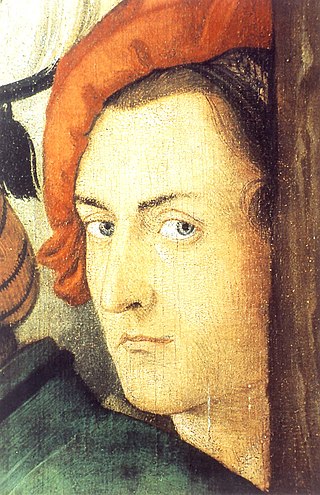
Hans Baldung, called Hans Baldung Grien,, was a painter, printer, engraver, draftsman, and stained glass artist, who was considered the most gifted student of Albrecht Dürer and whose art belongs to both German Renaissance and Mannerism.
Death and the Maiden, a concept ultimately derived from the Medieval "Dance of Death", may refer to:

Death and the Maiden was a common motif in Renaissance art, especially in German painting and printmaking. The usual form shows just two figures, with a young woman being seized by a personification of Death, often shown as a skeleton. Variants may include other figures. It developed from the Danse Macabre with an added erotic subtext. The German artist Hans Baldung depicted it several times.
Events from the year 1529 in art.
Events from the year 1510 in art.

Till Death Do Us Part is the ninth studio album by American death metal band Deicide, released on April 28, 2008. This is the band's longest album, being 42 minutes long and presenting some doom metal influences. Initial copies of the album included a sew-on patch with an image of vocalist Glen Benton and the phrase "Glen Benton for President". The album was also released on several colours of vinyl in limited numbers. The artwork of the album cover is a segment of the painting Woman and Death (1518-1520) by Hans Baldung.
Events from the year 1544 in art.
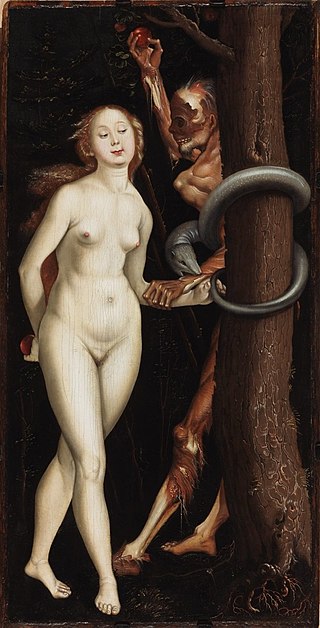
Eve, the Serpent and Death is a painting by the German Renaissance artist Hans Baldung, housed in the National Gallery of Canada, Ottawa. The date of the painting is debated, with proposals ranging from the early 1510s to between 1525 and 1530. Its four main elements are the biblical Eve, a male figure personifying Death and generally likened to Adam, a serpent, and a tree trunk.

Dorothea of Caesarea is a 4th-century virgin martyr who was executed at Caesarea Mazaca. Evidence for her actual historical existence or acta is very sparse. She is called a martyr of the late Diocletianic Persecution, although her death occurred after the resignation of Diocletian himself.

The Four Witches, or The Four Naked Women, or The Four Sorceresses or Scene in a Brothel, are titles given to a 1497 engraving by the German Renaissance artist Albrecht Dürer. One of his earliest signed engravings, it shows four nude, exuberant women gathered conspiratorially in a circle in a confined interior setting, perhaps a bath house, which appears to have entrances from either side. Although clearly erotic, a small horned demon, perhaps representing temptation, is positioned in the left hand portal, peering out and holding what may be a hunting object, and is engulfed in flames.

The Three Ages of Man is a painting by Titian, dated between 1512 and 1514, and now displayed at the Scottish National Gallery in Edinburgh. The 90 cm high by 151 cm wide Renaissance art work was most likely influenced by Giorgione's themes and motifs of landscapes and nude figures—Titian was known to have completed some of Giorgione's unfinished works after Giorgione died at age 33 of the plague in 1510. The painting represents the artist's conception of the life cycle. Childhood and manhood are synonymous with earthly love and death. These and the approaching old age are drawn realistically. Titian's widely chosen topic in art history, ages of man, mixed with his own allegorical interpretation make The Three Ages of Man one of Titian's most famous works.
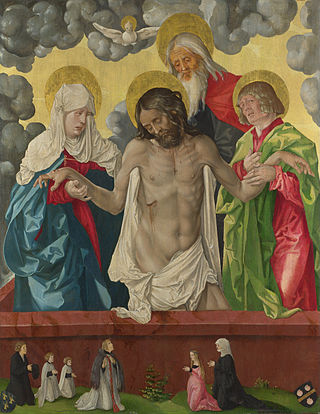
The Trinity and Mystic Pietà is an oil-on-oak painting produced in 1512 by German artist Hans Baldung.

Hercules and Antaeus is a 1531 oil painting by German artist Hans Baldung. It was donated in 1892 by Edward Habich to the Gemäldegalerie Alte Meister (Kassel) in Germany, where it still hangs.
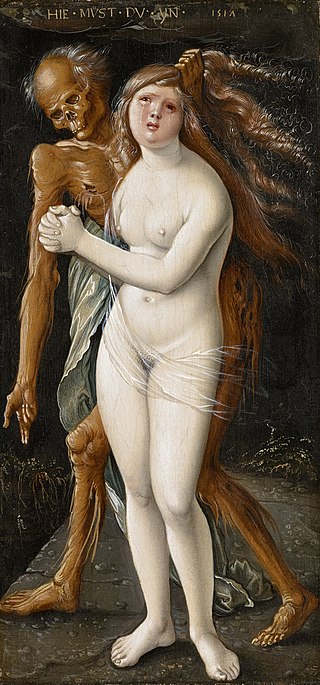
Death and the Maiden or Death and Lust is a painting executed in 1517 by the German artist Hans Baldung which is in the collection of the Kunstmuseum Basel, Basel, Switzerland.
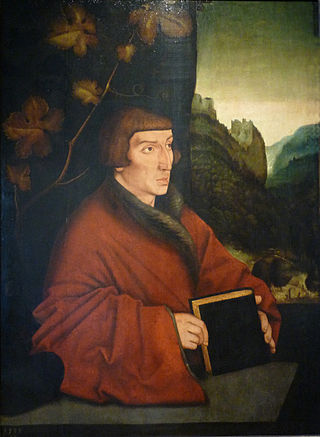
Ambrosius Volmar Keller is a 1538 portrait painting by the German Renaissance artist Hans Baldung. The painting was offered to the city of Strasbourg by German Emperor Wilhelm II, from his private collection, in 1890. It is on display in the Musée de l'Œuvre Notre-Dame. Its inventory number is MBA 191.
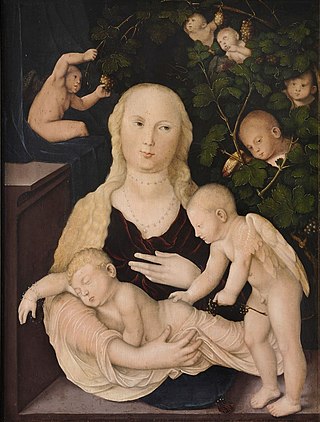
Madonna in the Vine Arbour is a circa 1541–1543 unsigned painting by the German artist Hans Baldung. It is on display in the Musée de l'Œuvre Notre-Dame. Its inventory number is MBA 536.
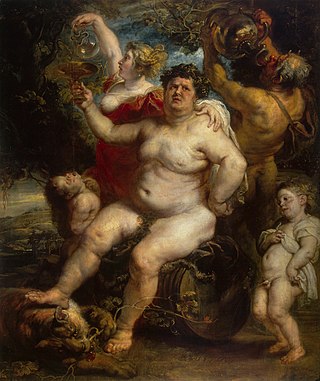
Bacchus is a 1638-1640 oil painting of Bacchus by Peter Paul Rubens, now in the Hermitage Museum, in Saint Petersburg, for which it was purchased in 1772. It was originally on a panel support but was transferred to canvas in 1891 by A. Sidorov. An autograph copy of the work is now in the Uffizi in Florence.
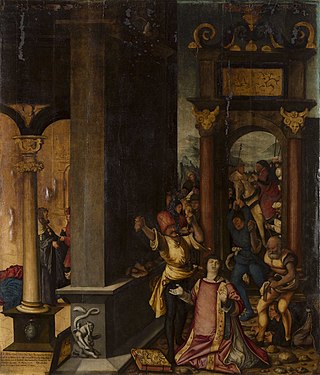
The Stoning of Saint Stephen is a 1522 painting by the German Renaissance artist Hans Baldung. It is on display in the Musée de l'Œuvre Notre-Dame. Its inventory number is MBA 315.

The Seven Ages of Woman is a painting (1544) by the German painter Hans Baldung, called Grien, executed in oil paint on linden wood. It is part of the collection of the Museum der bildenden Künste in Leipzig, Germany.















